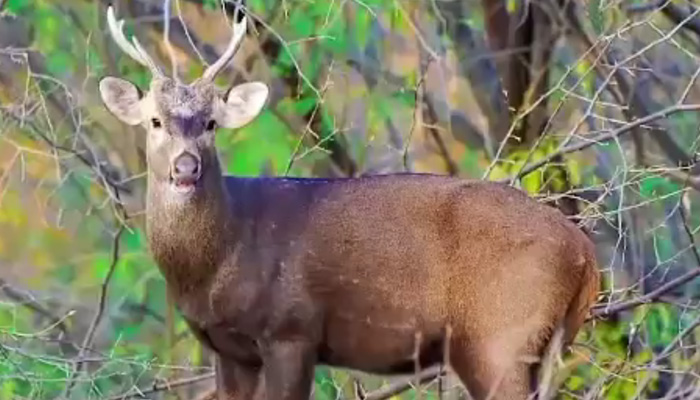Deadly 'goat plague' outbreak kills more ibexes at Kirthar National Park
Local residents attribute ibex deaths to a suspected viral disease known as Peste des petits ruminants (PPR)
September 19, 2023

- Deadly viral disease PPR causing ibex deaths.
- WIldlife officials fear further spread of outbreak.
- Water gets highly contaminated due to dead ibexes.
A deadly ovine viral disease also called 'goat plague' continues to kill the small population of ibexes at the Kirthar National Park, one of Pakistan's largest wildlife reserves near Karachi, with the death toll steadily rising despite desperate containment efforts by the concerned authorities.
The ibex is native to the Himalayan and Karakoram ranges in Pakistan.
In the Kirthar region, celebrated for its breathtaking scenery, and distinctive wildlife, approximately 25,000 ibexes find their habitat.
According to reports from local sources, four more ibexes were found dead yesterday, while nine others seem to have been affected by an infection, with the risk of the disease spreading from the deceased ibexes also looms.
The local sources revealed that the dead ibexes are being cremated and buried, while efforts are being made to clean their watering holes.
The water, in which the dead ibex were found, has been blocked by planting bushes as barriers to stop the movement of other animals around it, the local sources said.
They added that the water has become highly contaminated due to the dead ibexes, but rain is expected to clean it naturally.
Local residents attribute the deaths of ibexes in their wildlife habitat to a suspected viral disease known as Peste des petits ruminants (PPR).
Local residents said PPR is referred to as the "goat plague," which is highly contagious and primarily affects sheep and goats.
According to researchers, PPR infection typically results in a mortality rate ranging from 70 to 90% within a herd. The disease tends to be particularly fatal for juvenile animals, as they often succumb due to severe dehydration and nutrient loss resulting from extensive diarrhoea.
In the case of more mature animals, while they may survive initial diarrhoea, they frequently develop secondary bacterial pneumonia that can persist for weeks and frequently proves fatal.
Furthermore, if the virus spreads from livestock to an endangered species like ibexes, the consequences can be devastating, as these populations usually exist in very small ecosystems and may represent the last remaining few thousand animals of their species anywhere in the world.
They also expressed concern that the disease may have spread from goats to ibexes. There are approximately 25,000 ibexes in the Kirthar region.
Wildlife Department Hyderabad's Deputy Conservator, Wahid Shaikh, told Geo News that samples from the dead ibexes have been sent to the laboratory for analysis.
Shaikh also mentioned that the Sindh Wildlife Department has dispatched additional teams to the affected area.
Earlier this month, reports of ibexes dying from a disease began surfacing, with sources reporting that the number had reached dozens in the past three months.
The local sources had informed the provincial wildlife department regarding the emergency situation multiple times, sharing details about the stages of the disease due to which several ibexes succumbed.
They shared that the ibexes impacted by the disease experienced swelling of the eyes and a cessation of eating and drinking, ultimately leading to their death.









